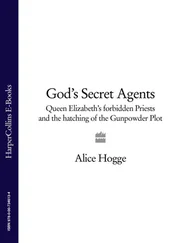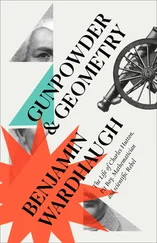Indeed, Hutton’s school was becoming something of a centre for learning. During the Christmas vacation of 1766–7 Hutton taught mathematics to other schoolteachers there, and at about the same time external lecturers began to use it as a venue. Caleb Rotherham covered geography, astronomy and other scientific subjects; likewise the popular James Ferguson. Ferguson was a house guest, and gave private performances to Hutton’s friends and family in the evenings, though Hutton was shocked when he discovered how little geometry the man knew. Hutton’s school was in a way a forerunner for the Literary and Philosophical Society that would be founded in Newcastle thirty years later, its first paid lecturer the same Caleb Rotherham.
His arrangement with Newcastle Grammar School brought Hutton himself two of his most celebrated pupils, and certainly his most colourful. John Scott was the son of a coal merchant; Bessie Surtees a wealthy banker’s daughter. Both went to Hutton for their mathematics lessons, but it was presumably not under his eye that their youthful romance blossomed. Scott went up to Cambridge in 1772, but the calls of love proved stronger and in November he came back and eloped (ladder, first-floor window) with Bessie. The scandal – or the romantic adventure, depending on your perspective – ran and ran through the nineteenth century, and Bessie Surtees merchandise is still to be had in her Newcastle home town.
3
Author

A country clergyman, anywhere in England, any time in the eighteenth century. At his desk, in his study. April. Open windows; sunlit air. An open manuscript of mathematical work. Solutions to puzzles from magazines, copied fair.
He copies this year’s set of solutions fairer still, adds a couple of suggestions for problems the magazine could ask this year. Mends his pen and adds a covering letter. Dear Sir. I enclose my mite for this year’s Diary, hoping you will find it worthy of notice. Your humble servant . Dusts the sheets, folds, seals.
A scene repeated many times – many hundreds of times – across Britain every year of the Georgian period. A few months later, in about October, the annual magazines went on sale: The Ladies’ Diary , The Gentleman’s Diary , The Mathematical Repository , and more. Some readers had the thrill of seeing their names, their mathematical work in print – a few won small prizes. Others looked in vain for their names, their work in the magazine, and concluded, humiliated, that their solutions had been wrong.

If Hutton had done no more than succeed as a provincial schoolteacher, his story would be a striking but not a very unusual one. The majority of mathematics teachers in Georgian Britain, indeed, were working-class lads who had made good: self-made men who had themselves attended private academies or bettered themselves by private reading. There were schools right across the United Kingdom that bore witness to their success in attracting students, providing them with high-level instruction and sending them out to work in the burgeoning literate and numerate trades.
Hutton was not satisfied with this. He wanted the wider recognition and the promise of greater rewards that publication would bring. And he approached publication through that remarkable Georgian institution, the mathematical periodical.
Now that they have disappeared, it’s hard even to imagine them, but in their heyday there were a dozen or so monthly or annual magazines whose purpose, or one of whose purposes, was to print mathematical problems and readers’ solutions to them. Construct a triangle given its base, one adjacent angle, and the line bisecting the opposite angle. Find a fraction with the property that, if you subtract its reciprocal, you get a square number. How many ways can you make fifteen from a pack of cards? This was not Sudoku, and it was not elementary arithmetic. The problems could be hard, using lots of algebra and geometry and sometimes even calculus. Since both problems and solutions were sent in by readers, an inevitable show-off effect meant that over time the problems tended to grow harder, the solutions more elaborate.
Despite the difficulty of the mathematics, the magazines sold plenty of copies: thousands, even tens of thousands. At any one time there were probably several hundred readers contributing their problems and solutions to them: it’s hard to say because, intriguingly, anonymity was the norm. Your name appeared in print only if you specifically said it was all right to print it. The writers were teachers, practitioners, gentlemen and women enthusiasts, schoolboys. They called themselves ‘philomaths’, and they loved mathematics for aesthetic and moral reasons as well as because it was, for many of them, a lifeline to a wider world of culture and ideas than they would ever reach otherwise: a world in which mathematical competence was everything. The austere language of mathematics was a very good place in which the shy, the modest and the provincial might both hide and shine, while allowing working-class and female mathematicians to contribute, perhaps anonymously, without being labelled. It enabled them to interact in a controlled way with people all across the country, to display what they were good at, improve their skills, lighten their countrified boredom.
Hutton approached this printed world under the tolerably transparent anagram of Mr Tonthu. Close to home, there was a mathematics column in the weekly Newcastle Courant , but he didn’t touch it. Instead, starting in December 1761, he sent in a string of able, elegant solutions to problems in Martin’s Magazine of the Sciences . (Benjamin Martin was a schoolmaster, lecturer, optician, seller of mathematical instruments, author, editor and tireless self-promoter: he issued his magazine monthly from 1754 to 1763.) He also appeared as the proposer of four questions of his own.
After two years Hutton/Tonthu became more ambitious: five of his solutions were printed in the much more prestigious Gentleman’s Diary , an annual compilation devoted to mathematical and other puzzles, and reputedly the home of the hardest of the philomaths’ problems. Hutton’s questions included equations to solve, geometrical constructions, and formulae for trigonometric expressions. Then he felt it was time for a fresh start under his own name, and the world heard no more of Mr Tonthu after 1763.
This time he aimed right at the centre of philomath culture: The Ladies’ Diary . Set up in the first decade of the century to contain charming little anagrams and easy mathematical problems in verse, the Diary had become under a series of editors the queen of the philomath journals, its four dozen pages containing – as well as an astronomical almanac for the year – problems as many and as hard as any of them. Some of the contributors were women, or pretended to be, but it had become primarily a place not to engage in genteel discussion of mathematics but to display high-level, up-to-date skills. Indeed, as an attempt to make mathematics a subject of polite public discourse it had by mid-century failed; like philomath culture as a whole it had become another instance of mathematics’ tendency to exclude and therefore to be anything but polite.
Visibility in this world was a prize worth having, and Hutton seized it. Over a decade from 1764 to 1773 he sent The Ladies’ Diary a total of fifty-seven correct solutions, of which twenty were printed in full. He answered the prize question correctly on five occasions: prizes were determined by lot and he won a total of twenty-eight free copies of the Diary for his pains. He also proposed four questions for solution by others, though two of them proved to be rather too hard and no correct solutions were received except his own. Still, if you were a British philomath in this period, you most certainly got to hear about Mr Charles Hutton of Newcastle.
Читать дальше














